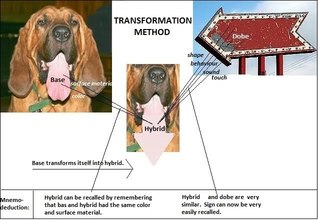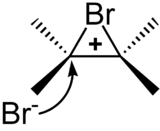Edited, memorised or added to reading queue
on 28-Apr-2017 (Fri)
Do you want BuboFlash to help you learning these things? Click here to log in or create user.
Flashcard 1425640918284
| status | not learned | measured difficulty | 37% [default] | last interval [days] | |||
|---|---|---|---|---|---|---|---|
| repetition number in this series | 0 | memorised on | scheduled repetition | ||||
| scheduled repetition interval | last repetition or drill |
Parent (intermediate) annotation
Open itCountries that have large differences between GDP and GNP generally have a large number of citizens who work abroad (for example, Pakistan and Portugal), and/or pay more for the use of foreign-owned capital in domestic production than they earn on the capital they own abroad (for example, Brazil and Canada).
Original toplevel document
2.1. Basic TerminologyNP is that GDP includes, and GNP excludes, the production of goods and services by foreigners within that country, whereas GNP includes, and GDP excludes, the production of goods and services by its citizens outside of the country. <span>Countries that have large differences between GDP and GNP generally have a large number of citizens who work abroad (for example, Pakistan and Portugal), and/or pay more for the use of foreign-owned capital in domestic production than they earn on the capital they own abroad (for example, Brazil and Canada). Therefore, GDP is more widely used as a measure of economic activity occurring within the country, which, in turn, affects employment, growth, and the investment environment.
Flashcard 1450642377996
| status | not learned | measured difficulty | 37% [default] | last interval [days] | |||
|---|---|---|---|---|---|---|---|
| repetition number in this series | 0 | memorised on | scheduled repetition | ||||
| scheduled repetition interval | last repetition or drill |
Parent (intermediate) annotation
Open itUnder any form of imperfect competition, price to the firm declines when a greater quantity is offered to the market; price to the firm increases when a lower quantity is offered to the market.
Original toplevel document
3. ANALYSIS OF REVENUE, COSTS, AND PROFITSzation requires that we examine both of those components. Revenue comes from the demand for the firm’s products, and cost comes from the acquisition and utilization of the firm’s inputs in the production of those products. <span>3.1.1. Total, Average, and Marginal Revenue This section briefly examines demand and revenue in preparation for addressing cost. Unless the firm is a pure monopolist (i.e., the only seller in its market), there is a difference between market demand and the demand facing an individual firm. A later reading will devote much more time to understanding the various competitive environments (perfect competition, monopolistic competition, oligopoly, and monopoly), known as market structure . To keep the analysis simple at this point, we will note that competition could be either perfect or imperfect. In perfect competition , the individual firm has virtually no impact on market price, because it is assumed to be a very small seller among a very large number of firms selling essentially identical products. Such a firm is called a price taker . In the second case, the firm does have at least some control over the price at which it sells its product because it must lower its price to sell more units. Exhibit 4 presents total, average, and marginal revenue data for a firm under the assumption that the firm is price taker at each relevant level of quantity of goods sold. Consequently, the individual seller faces a horizontal demand curve over relevant output ranges at the price level established by the market (see Exhibit 5). The seller can offer any quantity at this set market price without affecting price. In contrast, imperfect competition is where an individual firm has enough share of the market (or can control a certain segment of the market) and is therefore able to exert some influence over price. Instead of a large number of competing firms, imperfect competition involves a smaller number of firms in the market relative to perfect competition and in the extreme case only one firm (i.e., monopoly). Under any form of imperfect competition, the individual seller confronts a negatively sloped demand curve, where price and the quantity demanded by consumers are inversely related. In this case, price to the firm declines when a greater quantity is offered to the market; price to the firm increases when a lower quantity is offered to the market. This is shown in Exhibits 6 and 7. Exhibit 4. Total, Average, and Marginal Revenue under Perfect Competition Quantity Sold (Q) Price (P) Total Revenue (TR) Average Re
Flashcard 1451193404684
| status | not learned | measured difficulty | 37% [default] | last interval [days] | |||
|---|---|---|---|---|---|---|---|
| repetition number in this series | 0 | memorised on | scheduled repetition | ||||
| scheduled repetition interval | last repetition or drill |
Open it
The response was probably one of the following: - False modesty – Oh, my muscles? I just started going to the gym and apparently it’s working! - Awkward stuttering – Um… you mean my biceps? Thanks… I guess… Um… - Flat-out denial – What are you talking about? I’m fat, ugly and out of shape. You’re blind. - Evocation of a deep
Flashcard 1456871968012
| status | not learned | measured difficulty | 37% [default] | last interval [days] | |||
|---|---|---|---|---|---|---|---|
| repetition number in this series | 0 | memorised on | scheduled repetition | ||||
| scheduled repetition interval | last repetition or drill |
Parent (intermediate) annotation
Open itThe laws have a simple premise: Certain actions almost always increase one’s power (the observance of the law), while others decrease it and even ruin us (the transgression of the law).
Original toplevel document (pdf)
cannot see any pdfsFlashcard 1461906181388
| status | not learned | measured difficulty | 37% [default] | last interval [days] | |||
|---|---|---|---|---|---|---|---|
| repetition number in this series | 0 | memorised on | scheduled repetition | ||||
| scheduled repetition interval | last repetition or drill |
Parent (intermediate) annotation
Open it( mnemo ) deduction – Process of recalling dobe from its base (when the link between base and dobe is already made and we try to recall the dobe when seeing the base). In case of MLS the deduction would be
Original toplevel document
Transformation methodch spike can be thought as seperate object). We use this fact for letting base be constructed of little dobes (e.g lamp bulbs instead of spikes and skin) or just from dobe's surface (bulb's glass covering the skin and spikes). <span>( mnemo ) deduction – Process of recalling dobe from its base (when the link between base and dobe is already made and we try to recall the dobe when seeing the base). In case of MLS the deduction would be recalling dobe from another dobe. I use often term deduction instead of recall because in lot of cases the link between base and dobe is somehow logical and thus dobe can be deduced from its base. In case of
Flashcard 1478605016332
| status | not learned | measured difficulty | 37% [default] | last interval [days] | |||
|---|---|---|---|---|---|---|---|
| repetition number in this series | 0 | memorised on | scheduled repetition | ||||
| scheduled repetition interval | last repetition or drill |
Parent (intermediate) annotation
Open itA commercial letter of credit is a direct payment method in which the issuing bank makes the payments to the beneficiary.
Original toplevel document
Letter Of Credit Definition | Investopediaters of credit typically within two business days, guaranteeing payment by the confirming Citibank branch. This benefit is especially valuable when a client is located in a potentially unstable economic environment. Types of Letters of Credit <span>A commercial letter of credit is a direct payment method in which the issuing bank makes the payments to the beneficiary. In contrast, a standby letter of credit is a secondary payment method in which the bank pays the beneficiary only when the holder cannot. A revolving letter of credit lets the customer
| status | not read | reprioritisations | ||
|---|---|---|---|---|
| last reprioritisation on | suggested re-reading day | |||
| started reading on | finished reading on |
Elektrophile Addition – Wikipedia
bonyle 6 Literatur 7 Weblinks Addition an die C=C-Doppelbindung[Bearbeiten | Quelltext bearbeiten] Addition von Halogenen an Alkene[Bearbeiten | Quelltext bearbeiten] [imagelink] [emptylink] Addition von Brom an ein Alken <span>Molekulare Halogene können in einem zweistufigen Mechanismus an die Doppelbindung von Alkenen addiert werden. Das Halogenmolekül tritt hierbei in Wechselwirkung mit der Doppelbindung des Alkens, wodurch das Halogenmolekül polarisiert wird und sich die Elektronenbindung heterolytisch spaltet. Im ersten Schritt erfolgt die Addition eines Haloniumions (hier als Beispiel: eines Bromoniumions (Br + )) an die Doppelbindung des Kohlenstoffatoms, bei der es unter Aufspaltung der Doppelbindung ein kurzlebiges cyclisches Kation bildet. Im zweiten Schritt greift das Halogenidion (hier: Bromidion) nukleophil am positivierten Kohlenstoffatom an, wodurch das gesättigte α,β-dihalogenierte Produkt erhalten wird. Die Addition von Halogenen ist auf die Elemente Chlor, Brom und Iod beschränkt. Molekulares Fluor hingegen ist hochreaktiv und würde unselektiv C-C- und C-H- Bindungen angreifen. Chlor ist elektronegativer und schlechter polarisierbar als Brom und Iod. Aus diesem Grund verläuft die Addition von Chlor über eine carbokationische Zwischenstufe, die nicht durch die Ausbildung einer cyclischen (nicht existenten) Chloroniumsstruktur stabilisiert ist. [imagelink] [emptylink] Anti-Addition von Brom an ein Alken Die Ausbildung von stabilisierten Kationen, wie sie für die Addition von Brom und Iod auftritt, bestimmt auch die Stereochemie des gebildeten Dihalogenids. Hierdurch wird eine Seite des Moleküls effektiv für nukleophile Angriffe abgeschirmt, sodass der Angriff nur noch von der gegenüberliegenden Seite stattfinden kann. Man spricht hierbei von einer anti-Addition. Dies führt dazu, dass bei der Addition von Brom und Iod mit hoher Selektivität das anti-Produkt gebildet wird. [imagelink] Addition von Halogenwasserstoffen[Bearbeiten | Quelltext bearbeiten] Auch Halogenwasserstoffsäuren können an Alkene addiert werden, wodurch Halogenalkane gebildet werden. Diese Addition verläuft ebenfalls zweistufig. Im ersten Schritt addiert das Proton der eingesetzten Säure an die Doppelbindung. Im Gegensatz zu Haloniumionen besitzt das Proton nicht die Fähigkeit die positive Ladung zu stabilisieren, weshalb ein Carbokation gebildet wird. An dieses addiert nun im zweiten Schritt das Anion der Säure. [imagelink] Bei dieser Addition können zwei verschiedene Produkte gebildet werden, die sich in der Position des Halogens unterscheiden. Welches der Produkte bevorzugt gebildet wird, hängt von der Stabilisierung des intermediären Carbokations ab und wird durch die Markownikow-Regel beschrieben, die besagt, dass das Wasserstoffatom immer an das bereits wasserstoffreichere Kohlenstoffatom gebunden wird. Bevorzugt wird das Produkt gebildet, das ein besser stabilisiertes Carbokation besitzt. In der Regel ist das stabilere Carbokation das höher alkylierte. Je nach Edukt können bei dieser Reaktion hohe Regioselektivitäten erzielt werden. Alkohole aus Alkenen[Bearbeiten | Quelltext bearbeiten] Addition von Wasser an Alkene[Bearbeiten | Quelltext bearbeiten] Wasser ist ein schlechtes Nukleophil, weshalb die Umsetzun

